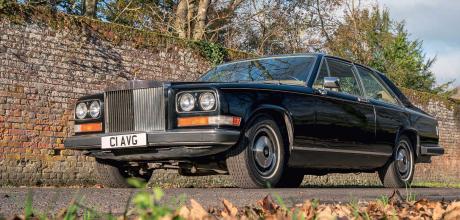1986 Rolls-Royce Camargue
Pininfarina’s styling for the Camargue was as close asRolls-Royce ever got to radical. After 47 years, can we finally appreciate the car’s unique looks?
WORDS: NIGEL BOOTHMAN
PHOTOGRAPHY: MATT RICHARDSON
COOL CAMARGUER-R’S FASCINATING COUPE
AGE BEFORE BEAUTY
Once an oddity, now a rarity – and seriously under-rated
Most of us with a fondness for classic cars, and especially for Rolls-Royce, will know a little bit about the Camargue. Challenging styling, of course, and we’ll probably remember that Pininfarina was responsible. More or less like a Shadow underneath, isn’t it? And that other pub quiz fact – the most expensive production car in the world, at least for a while. A bit of a flop in its day. But then what? You rarely see them, either on the road or on the market, and of those that do appear for sale, many seem to come from the USA. But values have been going up a bit, at last.
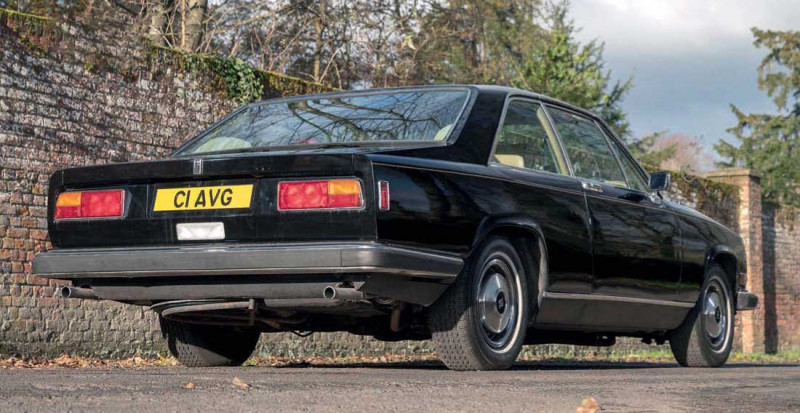
That’s probably where our general knowledge runs out. For most petrolheads the reaction to the Camargue varies from ‘Dear me, no thanks!’ to polite curiosity, at best. True lovers of the model are rare indeed, perhaps fitting for a car that sold only 526 units in 11 years. It’s interesting, then, that this car’s owner was only politely curious when he bought the car – and has now become a confirmed lover of the Camargue.
He is Nikolai Gurianov, and the tale of how he came to own one of these unusual cars is as quirky as the cars themselves. ‘I’m a big enthusiast for classic cars and I’ve been collecting only British cars for a while now. But this is not always easy. My wife is a graphic designer, and she has an eye for a good shape. When she saw an early Camargue in London one day, parked in Cadogan Square, she said “That is the only Rolls-Royce I’ve ever wanted.” So I noted to myself that this might be one model I was allowed to buy.’ The car Mrs Gurianov saw was an eye-catching lazuli blue, but choice in the Camargue market is limited. And what’s important to Mr Gurianov may differ – history and condition, for instance.
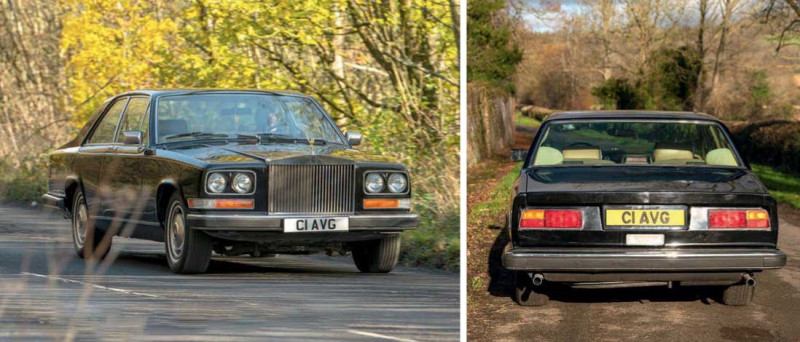
‘I prefer to buy barn finds,’ says Nikolai. ‘I like cars with originality and I don’t mind if they’ve been off the road for a while.’ That’s not to say he wanted a big project or a rust-bucket. Maybe something that survived without being messed about, ideally in a dry climate, like California for instance. ‘In 2017 I saw this car for sale with some dealers called the Beverley Hills Car Club in Los Angeles,’ says Nikolai. ‘I was buying two Jaguar E-types from them and I managed to do a deal to include this car. So they all went on the same ship, but whoever loaded the car wound down the driver’s window and it arrived with sea water inside!’

PUTTING IT RIGHT
Damage was restricted to the left-hand side of the driver’s seat suffering some cracking, but it’s still an annoying way to start. Luckily, the rest of the news was better. The car was 100% complete and even the handbook and history file were present and correct. The documents backed up the mileage and the car started and could be moved, but issues with the brakes and an overheating engine meant it would need some recommissioning work, or even a light restoration. And here’s another reason Nikolai likes barn-find cars. ‘When you restore a car, you put your time and energy into it and you may leave your mark on it. Many cars now are over-restored, I think, especially when it comes to paint and trim. I prefer to keep the true patina of the car’s history, and if something can be left alone, then leave it.
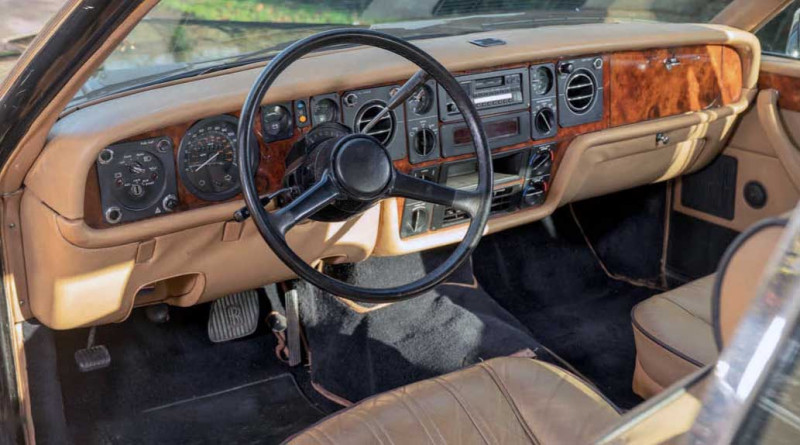
Anyway, there was plenty more to do.’ A first step was limited to getting the car through an MoT so it could be registered in this country, and then the work moved on in stages to include a thorough investigation of the brakes, suspension, a new radiator and some rebuilt cylinder heads, plus a few other minor jobs. It wasn’t always a straightforward process, as the Camargue has quite a few components that are not shared with any other Rolls-Royce or Bentley model.
‘I had to wait six or seven months to find the correct seal for the rear window,’ says Nikolai. ‘It’s an unusual square cross-section and the original one was leaking badly. And even now, after several years, I still can’t find an air-conditioning condenser for this car so the a/c doesn’t function.’ These side-effects of true difference are irritating but are certainly outweighed by the Camargue’s individuality. When you look at the car’s history now, it’s a surprising, almost baffling story, and rather than be disappointed the Camargue didn’t sell better we should probably be grateful it existed at all.
ORIGIN STORY
Rolls-Royce already had an expensive, exclusive two-door coupé with seating for four and a 6.75-litre V8, in the form of the Corniche. They had only just come to the end of a 70-year history of coachbuilt models as the last of the separate-chassis cars (not including the Phantom V and VI) made way for the unitary-bodied Shadow in 1965. Building different bodies on a unitary platform is more involved and costly that fitting coachwork to a separate chassis. James Young offered the first two-door Shadow, but it was soon brought in-house and re-styled as the MPW Coupé.
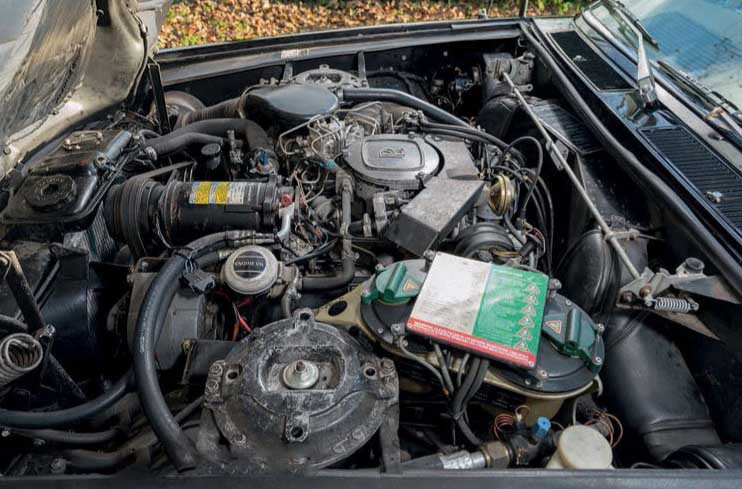
But it’s important to unpack a couple of details. First, Rolls-Royce took a long time to develop new models, meaning anything that appeared in the showroom had several years of R&D behind it. The original intention for the car that became the Camargue was as a replacement for the two-door Shadow / Corniche coupé. But going through the tumultuous bankruptcy and separation from the aero-engine business in 1971 delayed things and changed the emphasis of the business – these cars had to turn a profit. So the Corniche carried on and the new car was developed as a halo model with Shadow underpinnings, different styling and a sky-high price point.
David Plastow, R-R’s managing director, knew there was a demand from his wealthiest clients for this coachbuilt range-topper, but why go to Italy for the styling? The decision is rooted in a one-off car built for Lord Hanson by Pininfarina in 1968, an angular, square-nosed fastback based on a Bentley T1. It looked aggressively modern if not conventionally handsome, but it led directly to Rolls-Royce approaching Pininfarina in 1969 and asking for some coupé design proposals.
As with the Hanson car, the job fell to Paolo Martin, and he had some radical ideas. Gone were the soft curves of the early to mid-1960s and in came a straighter, sharper look with plenty of large, flat surfaces. His design for the Fiat 130 Coupé, which appeared in 1971, was a variation on the theme – or was the Camargue an adaption of the 130? They were developed at the same time. Either way, it seems unfair that Martin won a design prize for the striking 130 Coupé while the rather similar Camargue was so widely criticised.
A couple of reasons spring to mind. First, there is timing. Taking six or eight years to bring a car to market doesn’t matter so much with reserved, rather ageless styling like that of most Rolls-Royces, but dip a toe into fashionable waters and you feel the difference between 1971 and 1975. But second, and much more important, is to do with expectations of what a Rolls-Royce should be.
SIGHT AND TOUCH
Nikolai has thought a lot about this, and he has a brilliant way of summing up the effect created by the Camargue’s looks. ‘You could call it “cognitive dissonance”,’ he says. ‘It has all these square forms and the shapes and angles are hard, yet there’s this huge contrast with the way it drives, floating smoothly along like any other Rolls-Royce. It also feels different from other Rolls-Royces inside, because you sit deeper, more in the car than a Shadow, and there is this strange dashboard to explore.’
Ah yes, the dash. Paulo Martin’s look is inspired by an aircraft cockpit, with each instrument fixed onto the fascia rather than sunk within it. Yes, there is still plenty of expensive veneer but now it rests on a deformable aluminium structure for crash safety regulations. Split-level air conditioning was a bold and innovative step, and such features were another reason for the Camargue to exist – you introduce these ideas on the top-of-the- range car and gather publicity. ‘In general, it’s a very handy, accessible dash,’ says Nikolai, ‘even if some of the controls seem unusual, like the huge dash-light dimmer switch. But it’s the details that make this car special: the indicator repeaters, the lights, the door handles that push down instead of pull up. But it’s really on the road that this car speaks to you, not in the garage.’
Yes, in case no-one told you, the Camargue is a great car to drive. Don’t take our word for it, see this assessment from Motor Sport in the midst of an otherwise rather critical road test taken up by the styling and the huge price: ‘For a car which looks so huge and unwieldy, the handling of the Camargue proved remarkable, making driving the car smoothly at speed intensely satisfying.’
Nikolai finds this to be true, but believes you need to spend time with the car before it gets under your skin. Then you start to understand it. Some other truly innovative cars have the same characteristic; the Citroën-Maserati SM is one.
‘I just simply love it,’ he says. ‘It’s an amazing piece of design. It’s why I love the best British engineering; it’s about extracting the pure idea of what you want and making it into a mechanism. Add that to my love for special coachwork – my first car in the UK was a Bentley Mulliner Park Ward coupé – and the Camargue is wonderful. It’s also a late example, coming from 1986, which means it was built with Bosch K-Jetronic mechanical fuel injection, only the fourth Rolls- Royce to be equipped this way. It makes it much more responsive to drive.’ Indeed, Nikolai likes it so much he says he struggles to see his other coupé, a Bentley T1 with the James Young body, as a Rolls-Royce product.
The Camargue has brainwashed its owner. And it’s intrigued us. After all, for a man with a lot of nice cars under his belt, and a deep understanding of what they offer, the strength of Nikolai’s appreciation for the Camargue has to be taken seriously. ‘This balance between minimalism and the boldness of line that you get with the Camargue has to be revisited,’ he says. ‘Rolls-Royce need to be brave. I would strongly advise them to do a new Camargue!’ Anyone listening, down in Goodwood?
Long doors and generous rear seating make it a spacious car for such a close-coupled coupé design. Aircraft-style surface-mounted instruments are a Camargue signature feature. Narrow track compared with body width attracted unkind remarks when new. As a classic, it's less noticeable Bosch injection adds to visual complexity but is a big improvement over carbs.
Full set of books and American Roadside Assistance letter (right) survive with the car. The Camargue's best angle? Bold lines come together at the car's angular tail.
“...you sit deeper, more in the car than a Shadow, and there is this strange dashboard to explore.”
SPECIFICATION 1986 Rolls-Royce Camargue
- LENGTH: 5181mm
- WIDTH: 1918mm
- WEIGHT: 2347kg
- ENGINE: 6.75-litre V8
- MAX POWER: 220bhp @ 4000rpm
- MAX TORQUE: 330lb ft @ 2500rpm
- 0 60MPH: 10.9 seconds
- TOP SPEED: 119mph
- COST NEW: £29,950 (1975) / £85,000 (1985)
MORE RADICAL THAN THE CAMARGUE? ASTON’S BIG GAMBLE
During our conversation with Nikolai, he mentions another bold design that’s fascinated him – the Aston- Martin Lagonda. This car, arguably an even bolder shape than the Camargue and a bigger departure from its maker’s normal output, was styled by William Towns. It appeared a few months before the Camargue’s debut, launching at the Motor Show in 1974.
‘I think the British car industry made two big steps here, both ahead of their time,’ says Nikolai. ‘Aston were known for fast two-door GT cars but made a saloon, and Rolls-Royce were known for safe, soft, comfy cars but made this daring coupé. It was so brave.’
And yet, we think of the mid- 1970s as an all-time low for our car industry. Yes, labour relations and management were dreadful, so everything that resulted (poor build quality, confused development, delay) did immense damage, but the ideas and innovation were as strong as ever. Would the Camargue and Lagonda have attracted this reputation as ill-starred, ill-looking flops if their story had started in the prosperous, adventurous 1980s? ‘Look at the Tesla truck from 2020,’ says Nikolai. ‘It looks like a show car from the future but Tesla say they will build it. Yet the basic idea of those forms isn’t so different from the Camargue or the Lagonda. They are both underrated and deserve more respect.’
“Many cars now are over-restored, I think, especially when it comes to paint and trim. I prefer to keep the true patina...”


